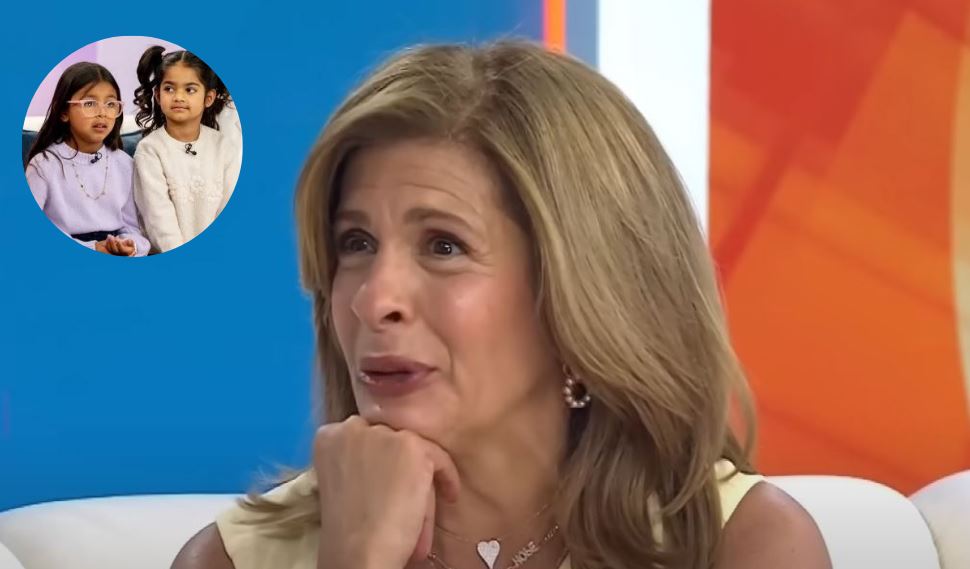
When Hoda Kotb disclosed that her six-year-old daughter, Hope, had been diagnosed with Type 1 diabetes on May 28, 2025, it was a watershed moment. The diagnosis caused a mother to immediately change course, resigning from her position as TODAY co-anchor, as if she had received an unexpected memo. First revealed on the People.com cover story that same day, she explained how Hope’s incessant need for monitoring “definitely weighed in” on her decision-making process.
Two years prior, Hope’s illness had suddenly manifested. What appeared to be common flu symptoms in February 2023 resulted in a two-week hospital stay, which included time spent in intensive care. As lifelong routines were reoriented to accommodate Hope’s medical needs, that week became a turning point for the Kotb family as a whole, not just for Hope.
Hoda Kotb & Daughter Hope
| Detail | Information |
|---|---|
| Mother | Hoda Kotb, journalist and former TODAY co-anchor |
| Daughter | Hope Catherine Kotb, born c. 2019 |
| Diagnosis | Type 1 diabetes, confirmed May 2025 |
| Early Symptoms | Flu-like signs, hospitalization in February 2023 |
| Treatment | Daily insulin shots, continuous glucose monitor (CGM) |
| Career Shift | Stepped away from TODAY in January 2025 to focus on care |
| Hoda’s Perspective | “Diabetes is part of her but not all of her.” |
| Family Adjustments | Meal-time checks, overnight monitoring, emotional balance for older child |
| Public Disclosure | Shared on TODAY show and People.com |
| Reference | People.com coverage, May 28 2025 |
Kotb described receiving insulin injections four to five times a day for the first year. The addition of a continuous glucose monitor has greatly enhanced overnight checks in recent months. “Five minutes at breakfast, five minutes at lunch, five minutes at dinner, sometimes overnight,” she explained, describing their daily schedule as a balancing act. All of that adds up to about 30 minutes of intense concentration in a 24-hour day—extremely accurate but remarkably typical.
The demands of live television clashed with this shift in home life. The strict deadlines and early mornings of Kotb’s previous anchor job were wholly inconsistent with Hope’s unpredictable medical schedule. She acknowledged, “I can be here and sweat over what’s happening to Hope, or I can be there and feel relief that I can see.” Her decision was spurred by that epiphany, which also inspired empathy in millions of people who understand the invisible burden of providing care behind closed doors.
Kotb emphasizes one fact throughout: Hope’s life is influenced by her diabetes, but it is not defined by it. Kotb emphasized, “She’s a happy, healthy, rambunctious, amazing kid,” striking a balance between vulnerability and a strong belief in allowing childhood to develop organically. That story reflects an inspiring change in the way parents talk about managing chronic illnesses without making kids feel less of themselves.
Hope’s eight-year-old older sister, Haley, is also affected. Even when medical care tends to favor Hope, Kotb was open about creating room for Haley’s feelings and making sure she feels equally loved and seen. The emotional balance needed when one child’s needs increase is a very relatable family dynamic.
Additionally, Kotb’s candor is a reflection of larger cultural trends toward celebrity openness. Parents in the public eye have become more open about their personal health struggles in recent years, ranging from their children’s long-term illnesses to their mental health journeys. This pattern is evident in Kotb’s disclosure, which is an invitation for mutual understanding and group development rather than a request for pity.
Together with the launch of Joy101, a wellness initiative that coincided with the disclosure of her diabetes, Kotb’s story represents a comprehensive reorientation of her career. Her platform now focuses on developing emotional intelligence, community resilience, and mindful parenting in addition to providing news. She is turning into an example of how to combine private goals with public influence.
Her method is supported by clinical experts. Pediatric endocrinologists emphasize the value of medical attention to detail without interfering with children’s enjoyment of life. Kotb’s approach, which combines lightness and active monitoring, is “highly efficient” care that is based on empathy. She turned psychological knowledge into useful advice, saying, “Watch them, but don’t put your worry on them.”
This conflict between public life and personal accountability is reminiscent of similar decisions made by well-known parents, such as actors who take time off work to raise their families or athletes who rearrange their schedules to accommodate their children’s medical needs. In contemporary caregiving, stepping back is no longer perceived as absence but rather as intentional presence, a sign of maturity.
For the most part, hope is thriving. Kotb characterized her daughter’s daytime as largely routine, with only brief medical checkups. Stories from families across the country remarkably resemble that tenacity, and Kotb’s openness provides a window into their world.
By deciding to cut back on her TV appearances, Kotb sets a new precedent: care isn’t always sacrificed for career. By doing this, she is allowing parents to redefine success—to exchange presence for prestige, and sporadic celebrity for unwavering love.
Kotb amplifies a message of hope—her daughter’s name, after all—of family strength, group compassion, and unwavering love by revealing this chapter. Instead of closing a door, she is embracing a wider culture of openness and empathy as well as her daughter’s medical journey.
